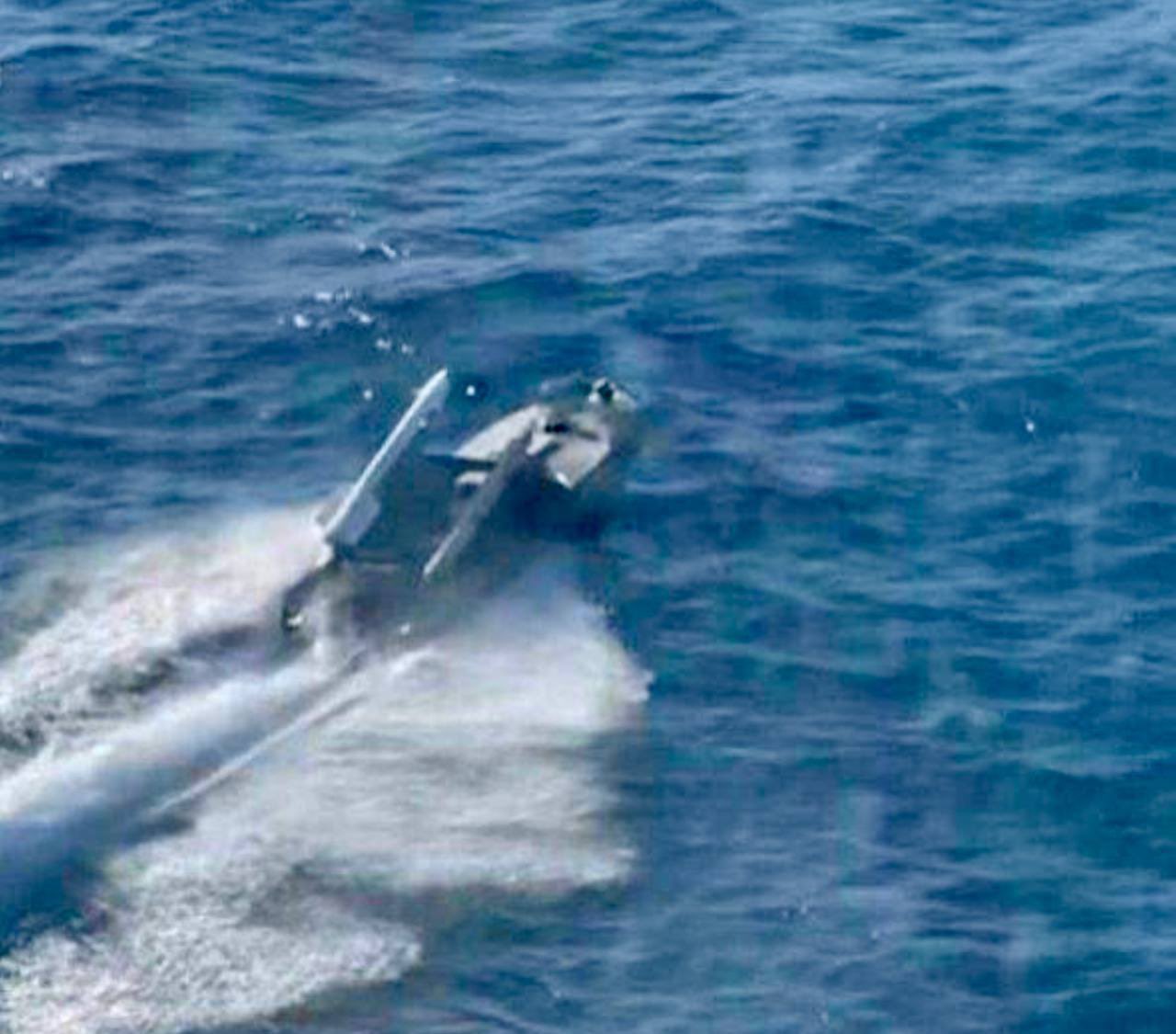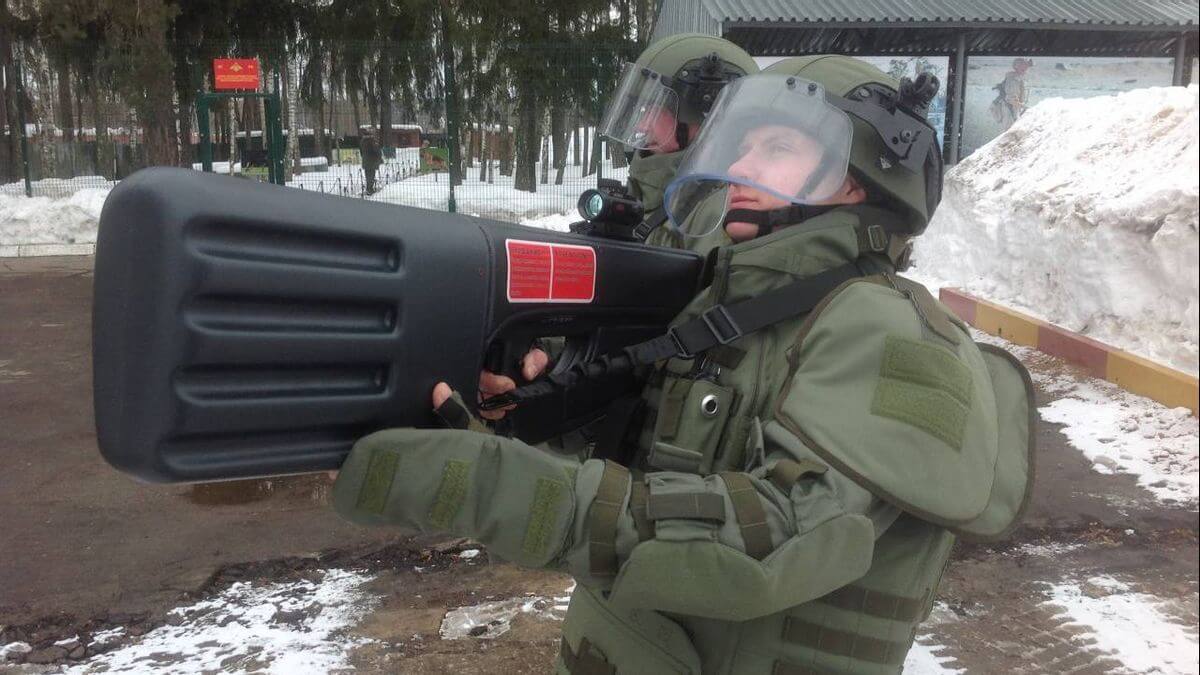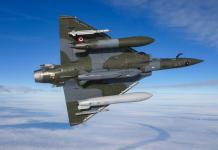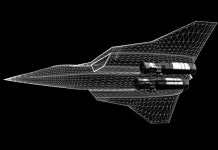Russia has recently deployed two drone interceptors—one designed for aerial threats and the other for sea-based drones—that could partially offset the threat posed by Ukrainian unmanned systems.
These small, high-performance interceptors are affordable enough for wide deployment.
Ukraine has effectively used aerial and seaborne drones to strike targets deep inside Russia, including ships in the Black Sea and coastal infrastructure.
While most are intercepted by Russian defenses, some manage to reach their targets. Much of their success is due to Western ISR support, which helps Ukrainian drones evade Russian radar.
Given their low cost and continued Western ISR support, Ukraine is likely to maintain a steady supply of drones to target Russia.
Lack Of Effective Point & Area Defence Against Drones
So far, Russia has relied on short-range air defense (AD) systems to counter large Ukrainian drones and electronic warfare (EW) systems to disrupt smaller FPV kamikaze, reconnaissance, and relay drones.
Both systems are expensive and cannot be deployed widely. Covering the full geographical extent and variety of drone threats is a costly undertaking.
Moreover, EW is a cat-and-mouse game—sometimes effective, often not.
In many cases, drones deliver more than they promise, while counter-drone systems deliver less.
Counter Aerial Drone Drone
The Russian high-speed aerial drone interceptor features a multi-band IR and TV homing sensor and is designed to provide localized coverage against Ukrainian bomber drones like the “Baba Yaga,” as well as reconnaissance and communication drones.
It could potentially also engage helicopters, MALE drones such as the Bayraktar, and hybrid cruise missile drones, which fly autonomously to the target area before being remotely piloted to strike.
Tentatively identified as the Z-55, the interceptor has a double X-wing configuration and resembles a quadcopter variant of the Lancet kamikaze drone with a shorter midsection.
As a quadcopter, it can take off vertically from the ground or hand-held, without a launcher. However, social media images also show a dual-cell launcher for stationary deployment.
The Z-55 reportedly reaches speeds of 350–400 kph—faster than standard Lancets, which top out at around 300 kph in “aerial mining” mode.
While Lancets are typically launched by catapult and powered by electric motors, a quadcopter variant suggests a shift toward greater mobility and operational flexibility.
There is no official confirmation from Russian sources such as ZALA Aero or state media regarding the Z-55’s specifications, including payload, endurance, or guidance systems.
Marlin Kamikaze USV Interceptor
On April 10, Izvestia reported that Russia had developed a small-displacement kamikaze USV (Unmanned Surface Vessel) interceptor, codenamed Marlin.
Developed by the Ushakov Baltic Higher Naval School, the Marlin comes in two variants: a riverine version with a 1.5 kg explosive warhead and a seaborne version with a 2 kg warhead.
While a 2 kg warhead may not seem significant, the threat it poses becomes clear when imagining it detonating against a Ukrainian USV loaded with a ton of explosives.
The fast-moving interceptor is capable of targeting both naval mines and USVs (referred to in Russian as BEK, short for Bezэkipazhnyy Ekspeditsionnyy Korabl’ or “Unmanned Expeditionary Ship”).
Its compact size allows for bulk deployment—potentially, dozens could be carried aboard a frigate or landing craft.
As of now, Marlin’s exact speed, dimensions, and displacement remain unconfirmed.
Ukrainian BEC Rampage
Ukraine introduced BEKs early in the conflict to challenge the dominance of Russia’s Black Sea Fleet (BSF) and disrupt coastal infrastructure in Crimea.
The Magura V5 and Sea Baby are Ukraine’s most successful USVs, evolving from crude explosive boats into advanced, long-range, multi-role platforms. By early 2025, new variants were capable of ranges up to 1,700 kilometers, enabling deep strikes into Russian-controlled waters.
The Magura V5 carries 200–320 kg payloads over 800–1,000 km, while the Sea Baby has been upgraded to carry 860 kg over similar distances. This extended reach has enabled attacks on BSF warships and strategic targets like the Kerch Bridge.

From late 2024, Ukraine further enhanced these drones with multi-role capabilities. Sea drones began appearing with air defense systems to counter Russian MALE drones, helicopters, and fighter jets.
In a naval warfare first, Ukrainian developers armed Magura V5 drones with Soviet-era R-73 air-to-air missiles, allowing them to target Russian helicopters and aircraft. Other drones, such as the Tavria-14.5, were equipped with 14.5 mm machine gun turrets for defense against enemy drones and boats.
The growing threat from Ukrainian sea drones has effectively deterred the BSF from interfering with Ukrainian grain exports, even after Russia withdrew from the UN-brokered Black Sea Grain Initiative.
Russian Countermeasures
Russia has attempted to counter the threat from Ukrainian BEKs using shipboard weapons, such as machine guns. The Russian Navy and Army Aviation have also incorporated BEK interdiction tactics into their training programs.

However, the high speed and agility of Ukrainian BEKs—especially in rough seas—pose significant challenges to these defenses.
Aerial countermeasures, including fighter jets, helicopter gunships, and armed MALE drones, have underperformed. This is largely due to the vast expanse of the Black Sea. Exploiting the long range of their USVs, Ukraine—supported by Western ISR—has been able to route BEKs to evade timely detection by Russian airborne patrols.
Arming ships with interceptor BEKs as point defense appears to be a step in the right direction.
Conclusion
Interceptor drones are finally becoming viable as technological advances overcome the challenges of high speed, maneuverability, and autonomous targeting—all within a compact, affordable, and easily deployable form.
Ukraine’s effective use of sea drones during the Russian Special Military Operation marked a turning point in naval warfare, demonstrating their strategic value.
The UK played a key role in advancing sea drone technology and tactics, using Ukraine as a proxy. Now, European nations are reportedly planning to patrol the Baltic Sea with unmanned boats to monitor Russian shipping.
For Russia, the urgency to develop effective aerial drones and BEK interceptors is both strong and immediate.
- Vijainder K Thakur is a retired IAF Jaguar pilot, author, software architect, entrepreneur, and military analyst.
- Follow the author @vkthakur




